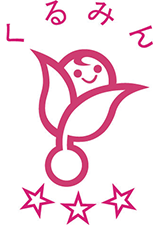Work-Life Balance
Our Approach
As a precondition to making our customers happy, the SUBARU Group believes it is vital to provide employees with workplaces where they can work with vigor and peace of mind and demonstrate their abilities to the fullest. In order to help diverse employees maintain their work-life balance, we are diversifying work style options and expanding the relevant systems.
Management System
At SUBARU, the Labor Policy Group of the Human Resources Department plays a central role in creating an environment in which employees can work with vigor and enthusiasm, diversifying work styles, and expanding systems through repeated discussions between labor and management.
Initiatives
Work Style Reform
SUBARU’s response to the Act on the Arrangement of Related Acts to Promote Work Style Reform*
| Item | Details |
|---|---|
| Accurate calculation of employees’ working hours | In July 2018, introduced a company-wide attendance management system for the central management of all electromagnetic records (computer log times and building entry/exit times) for the accurate calculation of employees’ working hours. |
| Encouraging employees to take at least five paid days off per year | In FYE March 2020, began implementing measures for all employees, including an initiative to encourage employees who are newly entitled to take 10 or more paid days off to take at least five days off within seven months after the entitlement. Also established operational rules to ensure that all employees can take at least five paid days off per year. |
| Imposing an upper limit on overtime working hours | Has been limiting the number of overtime work hours to 590 hours and below annually and to 79 hours and below monthly, setting the criteria stricter than those stipulated by law. |
| Raising the premium pay rate for overtime work exceeding 60 hours per month | Has been implementing necessary measures since FYE March 2011. |
| Equal pay for equal work | Began reviewing the amount of allowances granted to non-regular employees in FYE March 2021. |
| Work-from-home system | Conducted a test implementation starting in FYE March 2021, with full rollout to all sites beginning in FYE March 2022. |
| Abolishing mandatory core hours in the flex-time system | Full rollout to all sites beginning in FYE March 2022. |
- *
- This law was enacted in June 2018 to revise the labor-related laws to foster work style reform.
Activities to Create an Environment in which Employees Can Work with Vigor and Enthusiasm
Appropriate Management of Working Hours
SUBARU implemented a new attendance management system in FYE March 2019. This system enables exact time management down to the minute, allowing employees and their supervisors to check attendance records entered by the employee, and differences versus building entry/exit times and computer log times.
Reduction of Long Working Hours
SUBARU established in FYE March 2016 “ultra no-overtime day,” on which all managers and general employees leave work on time across its sites. Moreover, mainly targeting the staff of the development and administrative departments of the Gunma Plant and the development department of the Tokyo Office, we make it a rule to lock the doors on the office floor at 10:00 p.m., thereby making all those working on the floor leave before the doors are locked. By clearly imposing limits on overtime work, we are helping employees to be more conscious about their working hours.
In addition, we provide consultations with industrial physicians for employees who have worked long hours in excess of a defined level.
Flex-time System
SUBARU introduced the flex-time system in FYE March 1999. In FYE March 2022, we abolished mandatory core working hours, building an environment where employees can work more flexibly and independently. Employees now have greater discretion than before in their work hours, contributing to improved productivity and richer private lives.
Hybrid Work
SUBARU began introducing its work-from-home system to all sites in FYE March 2022. By offering employees the choice of their work location in accordance with the particular characteristics of their duties, we are contributing to improved productivity through adjusting how they work, and to stronger management capabilities for promoting appropriate delegation of authority. Then, in October 2022, we announced our basic approach to adopt hybrid work, combining work from home and work on site. We are working toward sustainable productivity improvement by incorporating features of both styles of work, including improving work-life balance through telecommuting using IT tools and fostering a sense of unity in the organization through face to face work at workplaces.
Paid Leave
SUBARU grants employees annual paid leave in the number of days commensurate with their length of service. In addition, at each of our sites, labor and management cooperate to encourage employees to take the leave.
- Initiative Examples:
- Ultra-long holidays (three consecutive days of paid leave)
Encouraging leave on national holidays
Encouraging leave once a month
Annual Paid Leave Utilization Rate* (Non-consolidated)
(FYE March)
| 2019 | 2020 | 2021 | 2022 | 2023 | |
|---|---|---|---|---|---|
| Proportion of paid days off taken by employees (%) | 85.7 | 86.4 | 95.4 | 88.7 | 97.6 |
- ※
- Percentage of the number of days off taken by employees of the total number of annual paid days off granted to them.
Support for the Maintenance of Balance between Work and Elderly Care
At SUBARU, we believe that for employees to continue working with peace of mind, it is important to help mitigate the concerns and burdens of employees and their families concerning the care of the elderly family members. Based on this belief, SUBARU has posted the Elderly Care Support Handbook to its intranet to inform employees of the related systems available internally and externally and of the contacts through which they can ask for advice. We have also established a specific long-term care support system to help reduce the burdens imposed on employees.
Number of Employees Who Took Long-term Care Leave (Non-consolidated)
(FYE March)
| 2019 | 2020 | 2021 | 2022 | 2023 | ||
|---|---|---|---|---|---|---|
| System for employees to take leave to take care of the family member in need of long-term care | Number of employees who took this leave (Persons) | 9 | 30 | 3 | 4 | 8 |
Support for the Maintenance of Balance between Work and Childcare
At SUBARU, we believe it is important to provide employees with an environment that both allows them to continue developing their careers while raising their children and facilitates a balance between job satisfaction and a fulfilling personal life. Accordingly, we formulated a voluntary action plan in line with the Act on Advancement of Measures to Support Raising Next-Generation Children*. At present, SUBARU has received three stars in the “Kurumin” certification from the Japanese Minister of Health, Labour and Welfare, and is taking action based on our 8th Action Plan.
8th Action Plan (Japanese version only)
- *
- This law was enacted for the provision of an environment where people can have and raise children, who are the next generation of leaders, in a sound manner.

As a result of establishing a support system based on criteria that are stricter than the legal obligations, the number of employees who quit their jobs for childcare has decreased to almost zero at our administrative departments. We are now stepping up the measures to support employees in achieving career advancement while raising their children.
For the production departments of the Gunma Plant, we have been fostering measures to help employees return to their shift work smoothly.
Specifically, in FYE March 2019 we began making the conference rooms available for the children of employees, where they can wait until their nursery schools are opened. We also started to provide employees with an early-morning childcare service by qualified nursery teachers on a trial basis. Then, in FYE March 2020, we conducted a full rollout of these measures at sites neighboring the plant. In FYE March 2022, we opened an early-morning childcare facility on the premises of the plant, and in FYE March 2023, we began accepting children for nighttime and late-night childcare services.
Separately, we are working to raise awareness and promote usage of the various systems available to employees, such as making the Maternity Leave and Childcare Support Handbook available on our intranet and holding training about childcare leave for male employees.
Systems and Initiatives for Childcare Leave
SUBARU’s employees can extend the period of childcare leave to the end of the first April after the child becomes two years old. As of FYE March 2023, both fixed-term and non-fixed-term employees who have been with the Company for less than one year will be able to take leave, making the system even easier to use.
In addition, we have initiated efforts to ensure that, when an employee submits a notice about their spouse’s pregnancy or childbirth, the employee’s managers and supervisors in the reporting line (as well as human resources personnel) have individual informational exchanges with the employee and confirm their intentions.
Number of Employees Who Took Childcare Leave (Non-consolidated)
(FYE March)
| 2019 | 2020 | 2021 | 2022 | 2023 | |||
|---|---|---|---|---|---|---|---|
| System for employees to take leave for childcare | Number of employees who took leave | Male | 24 | 35 | 56 | 98 | 211 |
| Female | 29 | 38 | 36 | 35 | 45 | ||
| Total | 53 | 73 | 92 | 133 | 256 | ||
| Rate of employees who returned to work (%) | Male | 100 | 100 | 100 | 100 | 100 | |
| Female | 97.5 | 95 | 100 | 98 | 100 |
- Note:
- Disclosed figures from 2021 and before have been modified to reflect changes in calculation methods and classifications.
Childcare leave taken by male employees
In FYE March 2023, 211 of SUBARU’s male employees took childcare leave, at a rate of 38.5%. Also, under the special childcare leave system, which allows employees to take up to five days off at the birth of their children, 93.2% of male employees eligible for this leave took at least one day of leave. We will continue to provide workplaces where employees can take this leave in addition to childcare leave.
Status of Childcare Leave Taken by Male Employees (Non-consolidated)
- Male employees taking leave: 211
- Average days of leave taken: 62.4
- Largest number of days of leave taken: 366
- Utilization rate: 38.5%
Special Childcare Leave Taken by Male Employees (Up to 5 days, not including paid leave, non-consolidated)
Male employees taking leave: 528
Average days of leave taken: 3.0
Utilization rate: 93.2%
Short working hours system for childcare
Employees can use this system until their children become fourth graders at elementary school and can also concurrently use the flex-time system.
